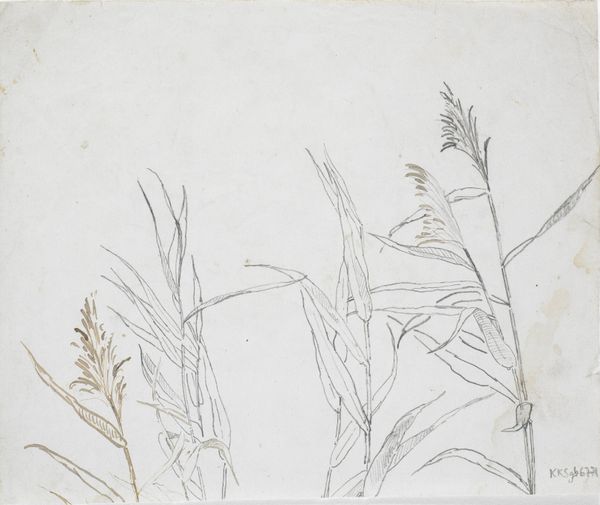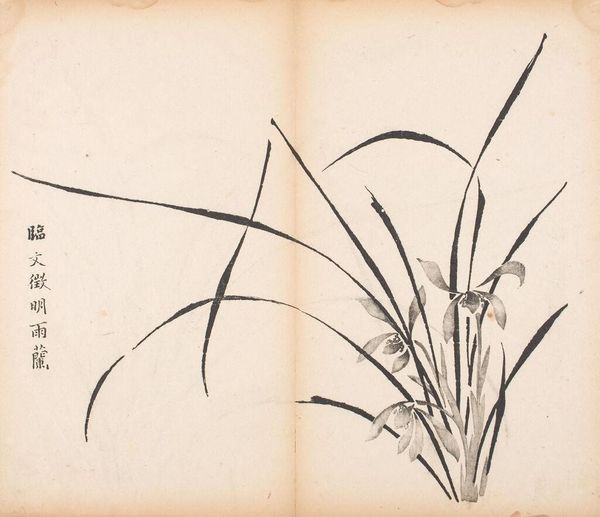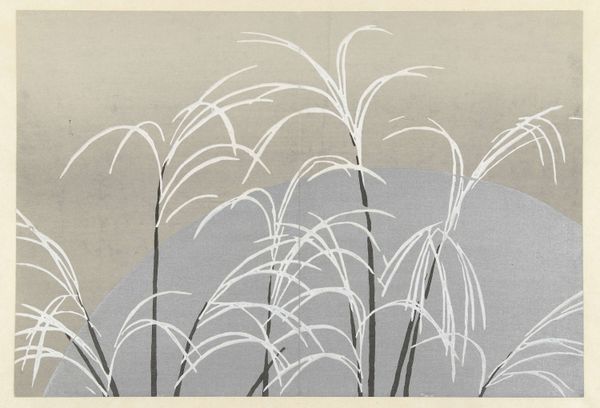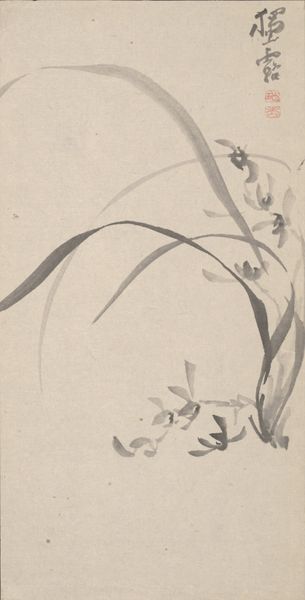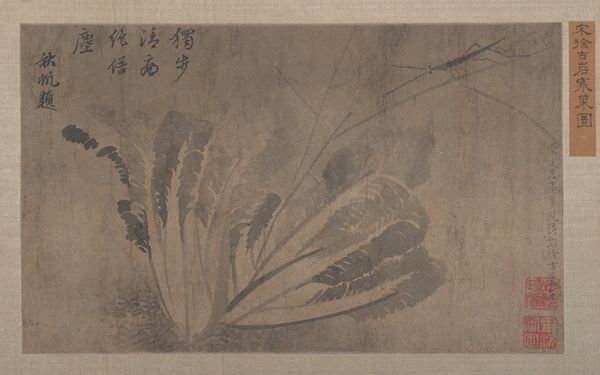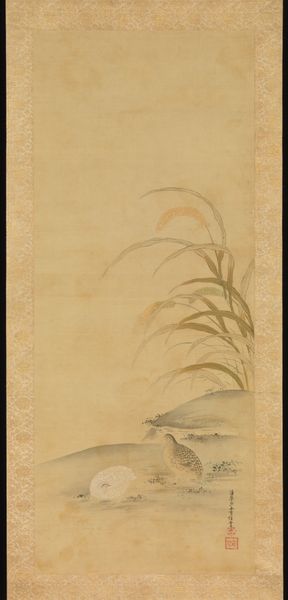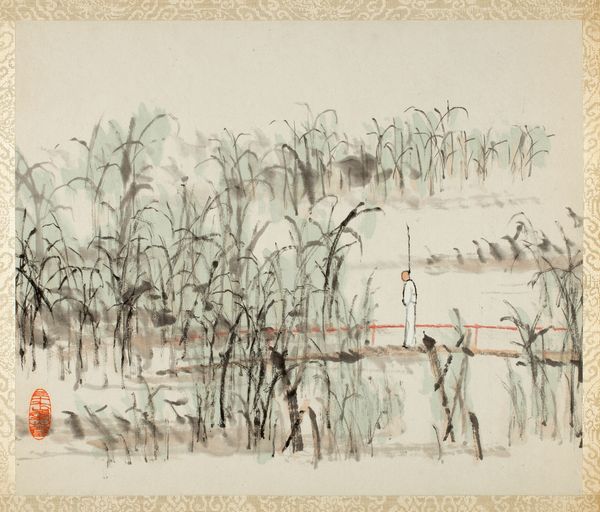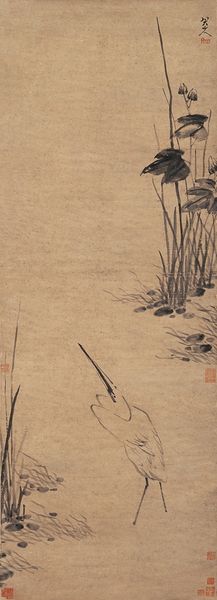
drawing, ink
#
drawing
#
pen sketch
#
asian-art
#
ink
#
plant
#
calligraphy
Dimensions: Image: 13 1/16 in. × 12 ft. 3 1/4 in. (33.2 × 374 cm) Overall with mounting: 13 7/16 in. × 32 ft. 7 3/16 in. (34.1 × 993.6 cm)
Copyright: Public Domain
Curator: Here we have "Narcissus," a pen-and-ink drawing from between 1234 and 1266, created by Zhao Mengjian. Currently, this work is housed here at The Metropolitan Museum of Art. What are your initial impressions? Editor: My immediate feeling is one of sparseness. The linework is so delicate, almost fragile, with the narcissus blooms appearing like gentle, watchful eyes amidst a sea of grass. Curator: The visual organization, indeed, favors subtlety. Note how the composition guides the viewer's eye, not through overt drama, but via a choreography of line and negative space. The flowers and leaves are rendered with remarkable economy of means. Editor: And it’s this very economy, this restraint, that piques my interest. Given its historical context, I’m wondering about the availability and specific sourcing of the inks. Were they locally produced? Was Zhao part of an established workshop with access to particular materials, or striking out alone? These practical aspects must have heavily informed the piece. Curator: A compelling perspective. One could argue the limitations inherent in ink drawing fostered its aesthetic potential, but beyond that, the ink serves as the very matter of the drawing's existence; to contemplate its origins is a useful investigation. Editor: Absolutely. For example, that varied tonality wouldn't only come from skill. Experimenting with the saturation and pigment load affects depth. And what of the paper itself? Was this type readily accessible or a luxury item, informing who had the time and space for art? Curator: It is the relationship between artist and material that helps define artistic approach. Perhaps this particular type of paper informed Mengjian's choices to build depth slowly rather than attempt a heavily layered ink. Editor: Considering that Narcissus became a potent symbol in later European traditions—reflection, self-absorption—the relative abstraction presented in Zhao’s iteration resists that narrative. It offers instead an intricate web of material production. Curator: I would suggest that this abstraction, which we can appreciate as a stylistic strength, grants the viewer the space for an aesthetic experience that transcends, while considering its relationship to, the medium in which it was produced. Editor: A beautiful point, framing how this seemingly simple ink drawing holds so many layers, historical, technical, and personal.
Comments
No comments
Be the first to comment and join the conversation on the ultimate creative platform.
